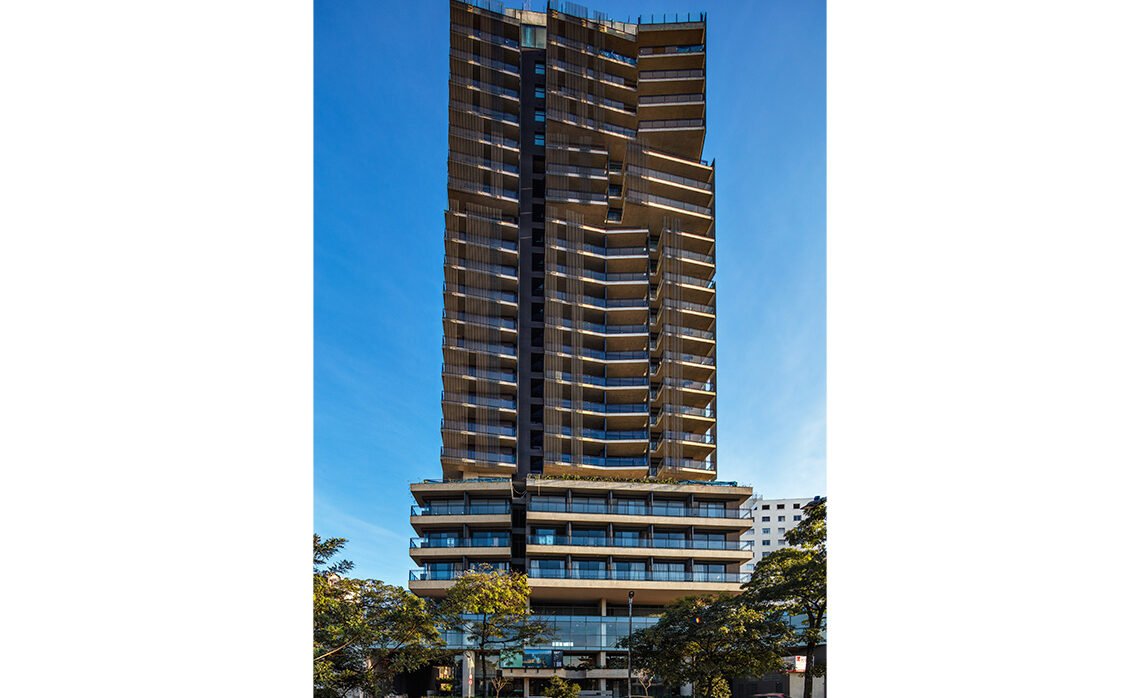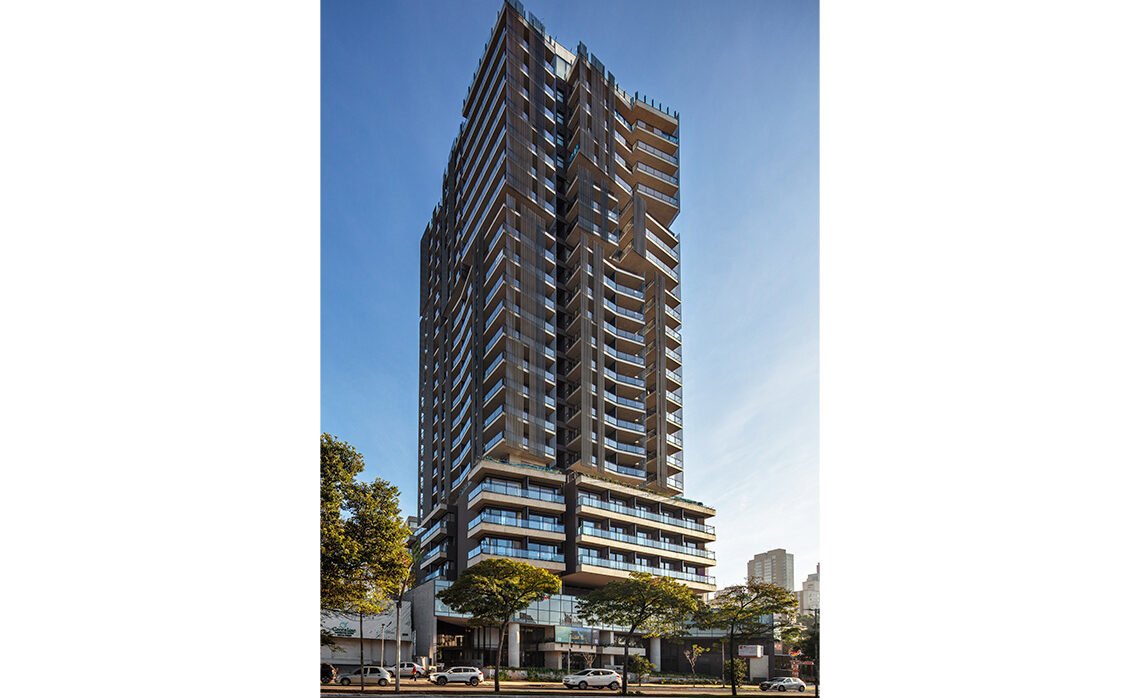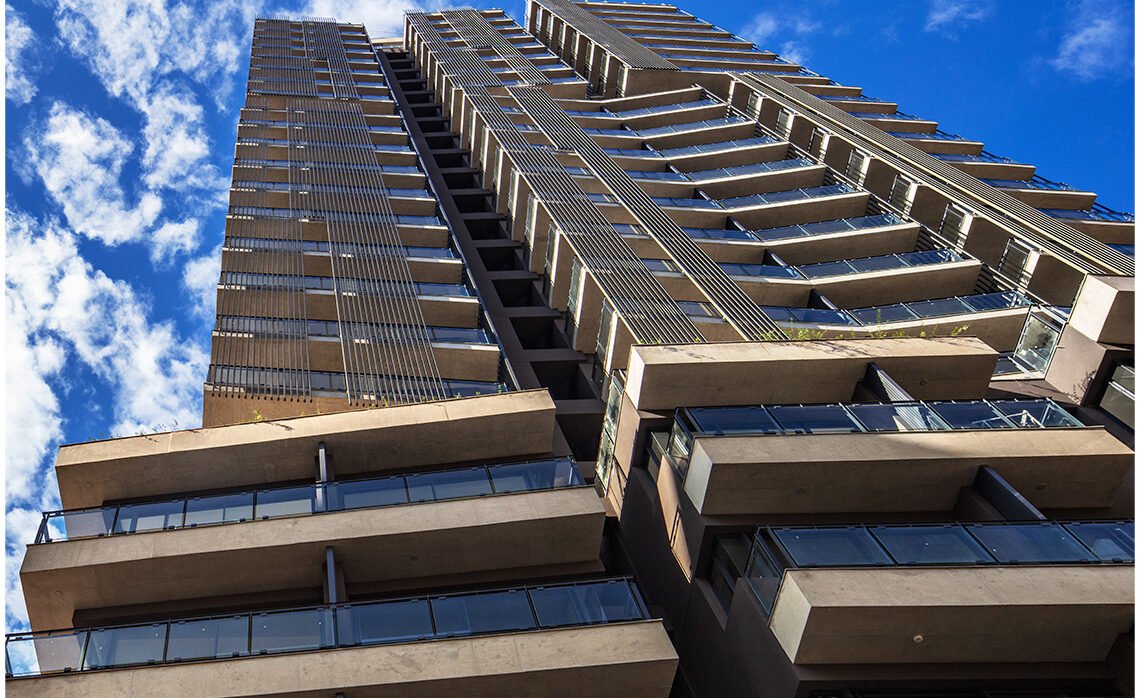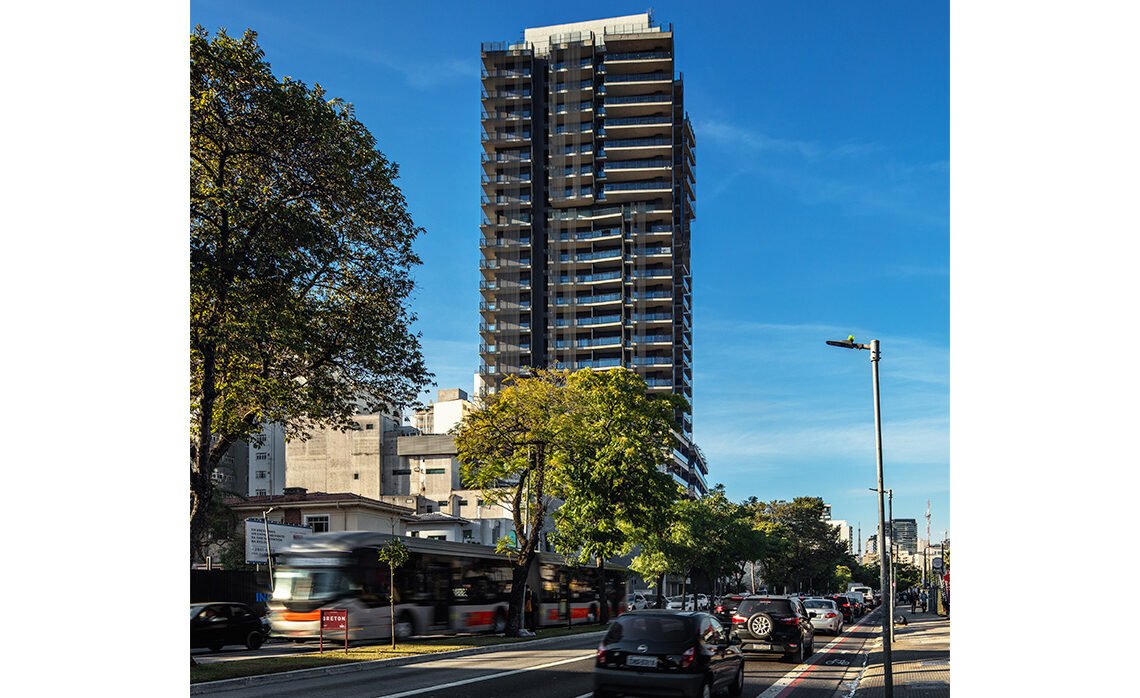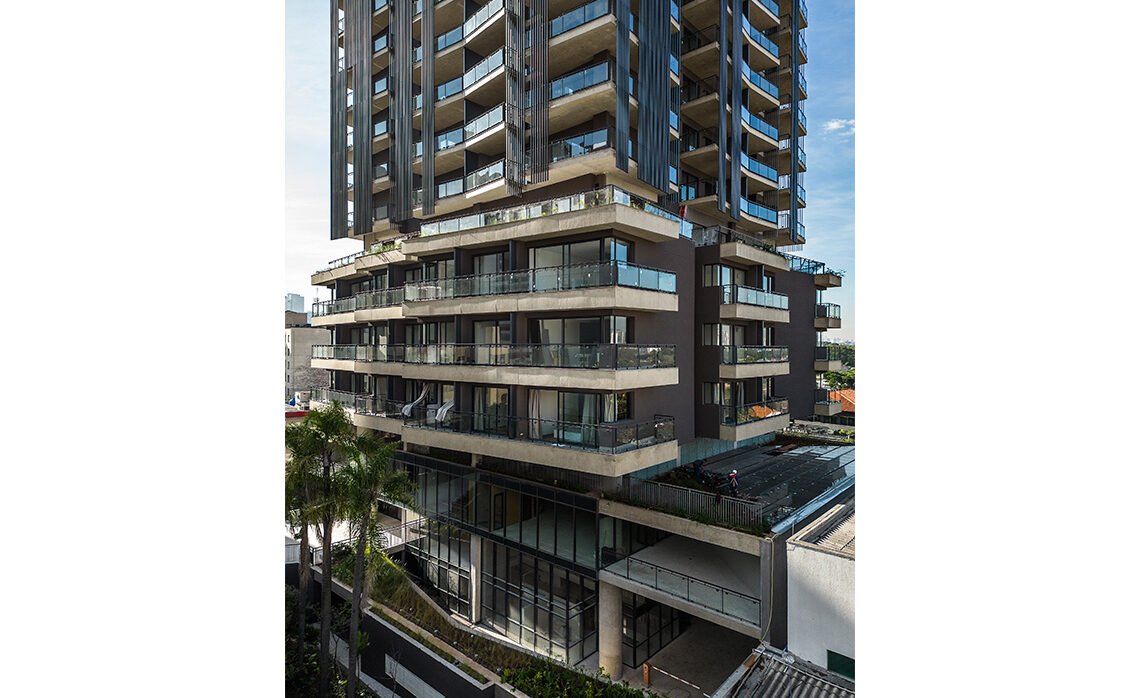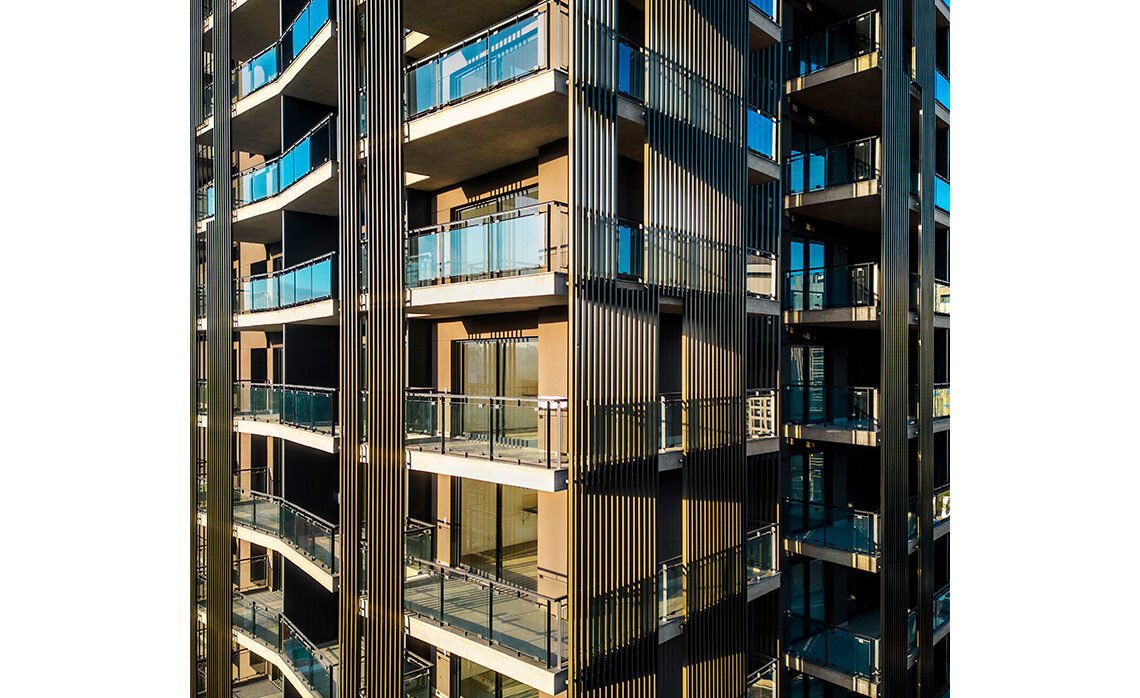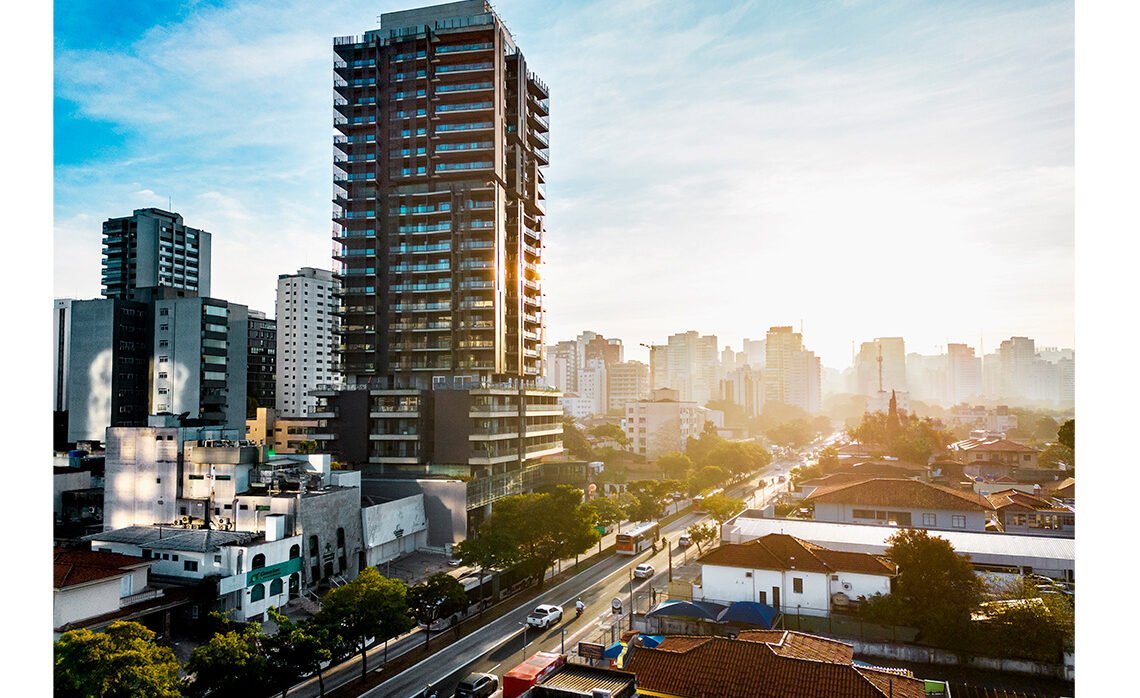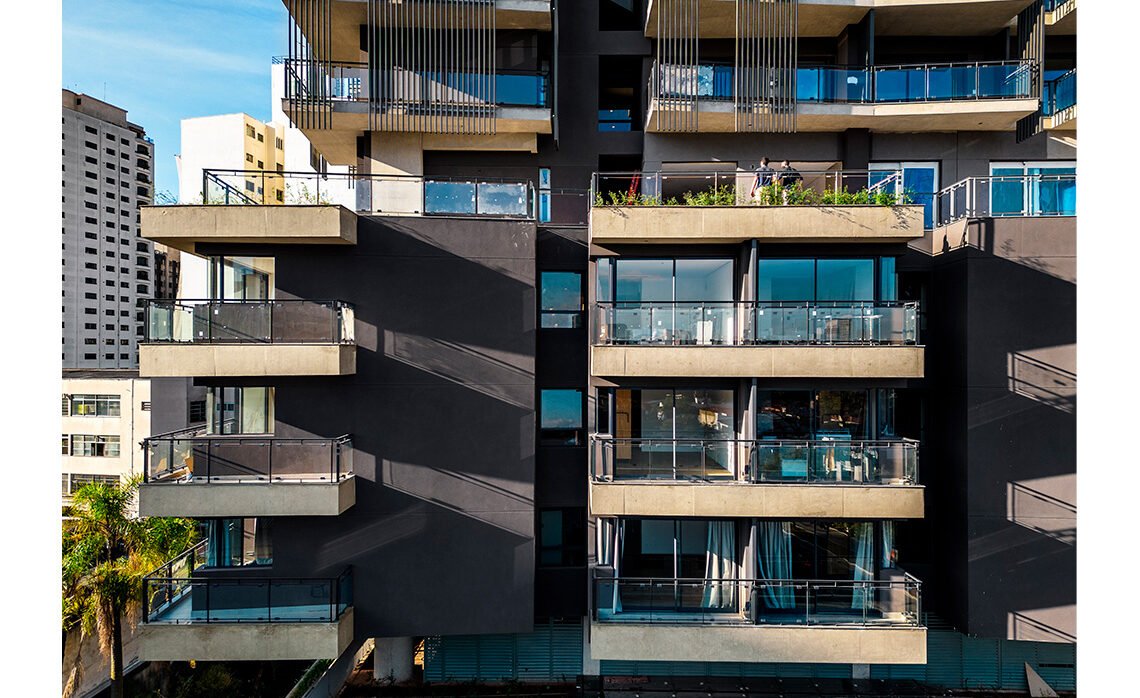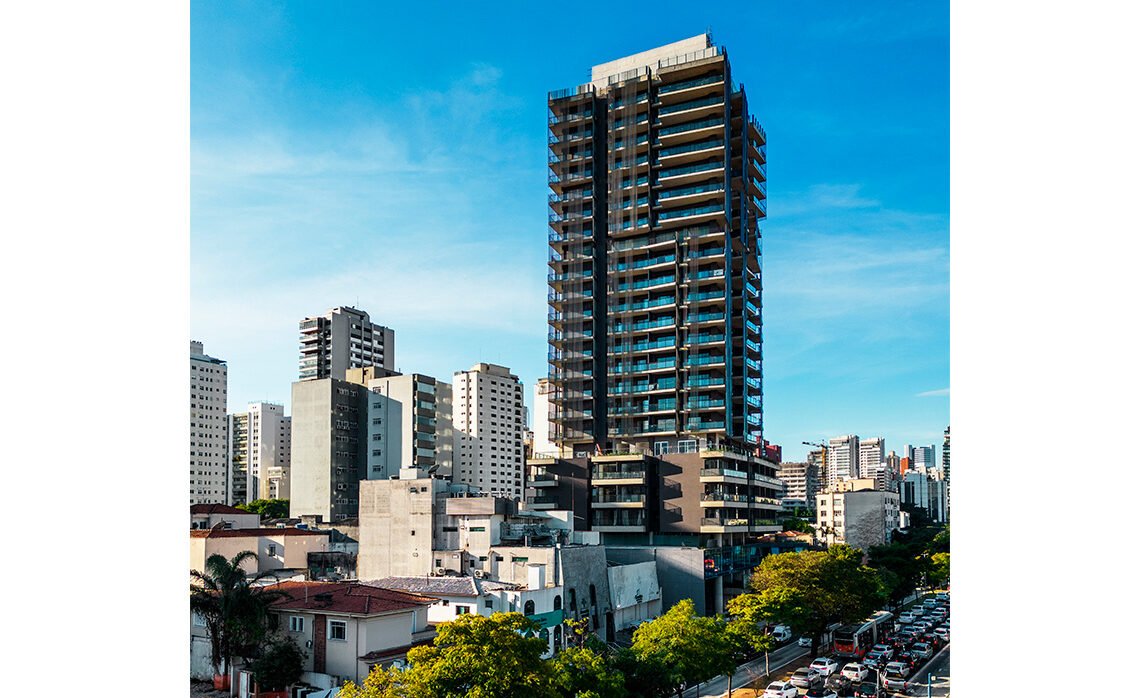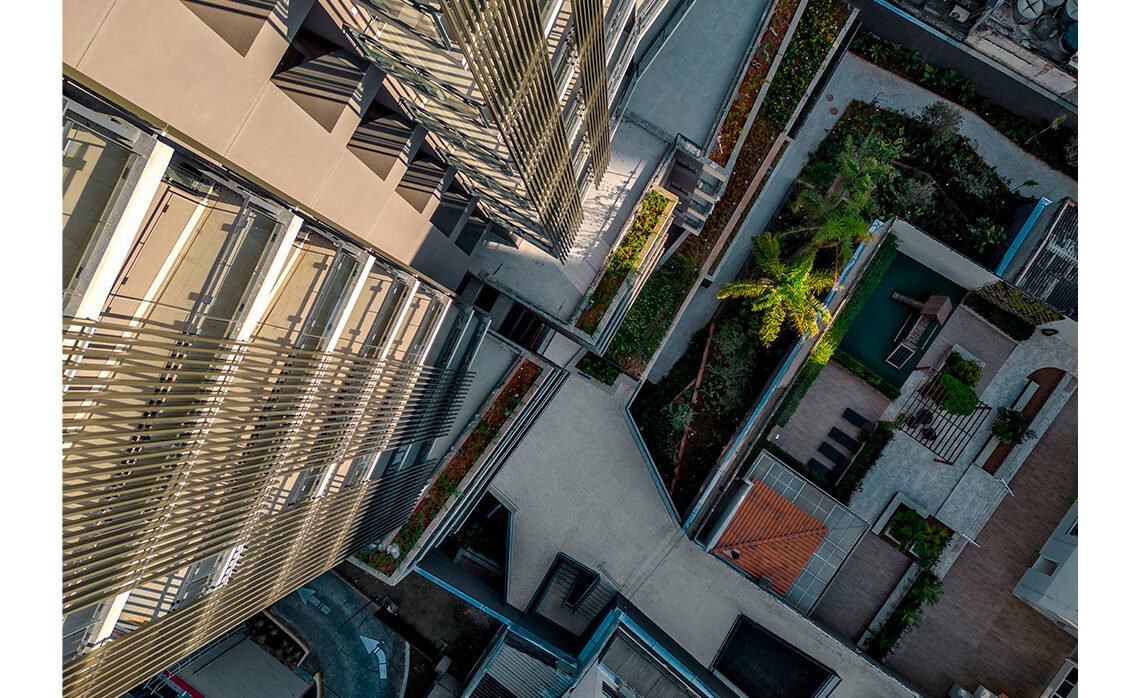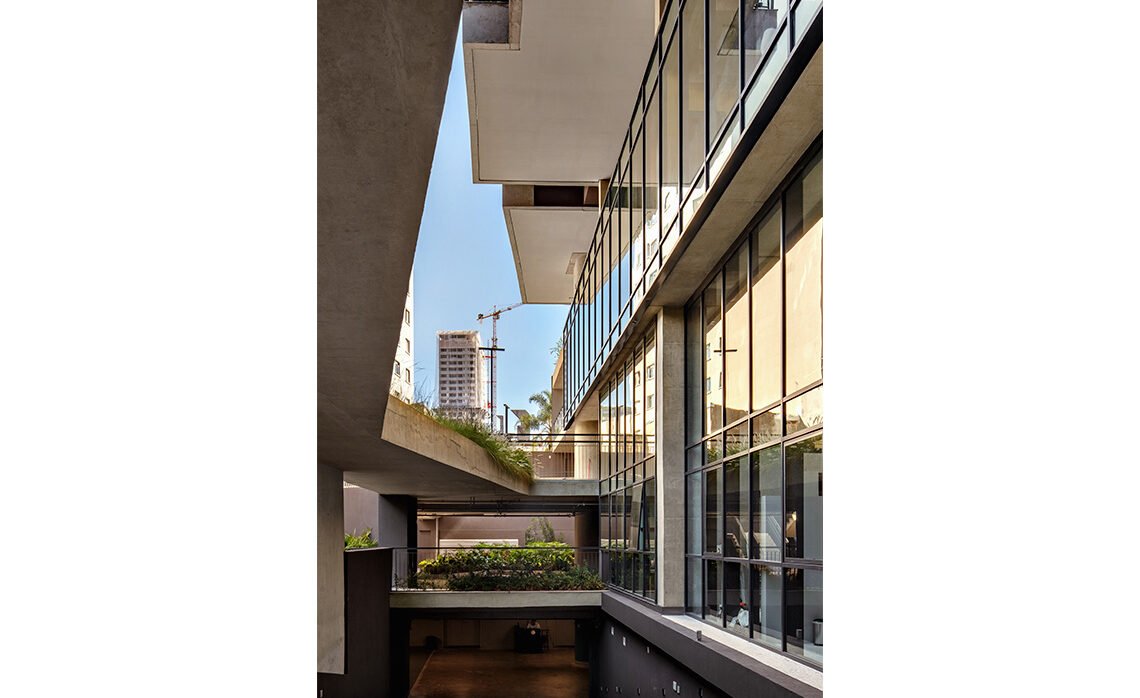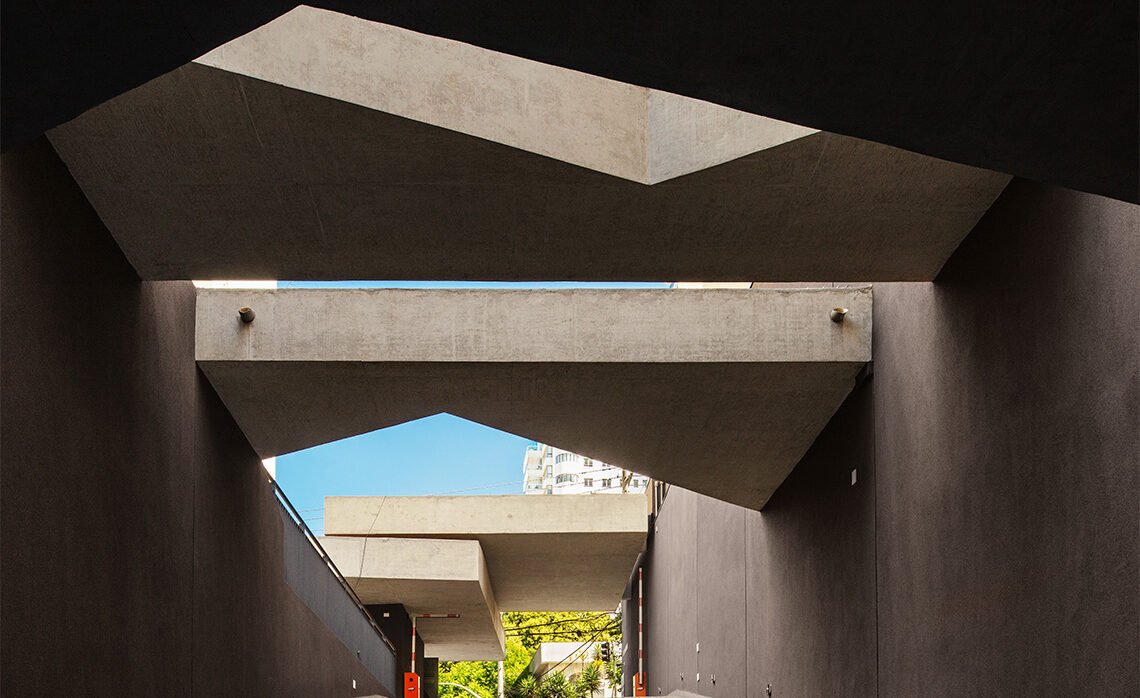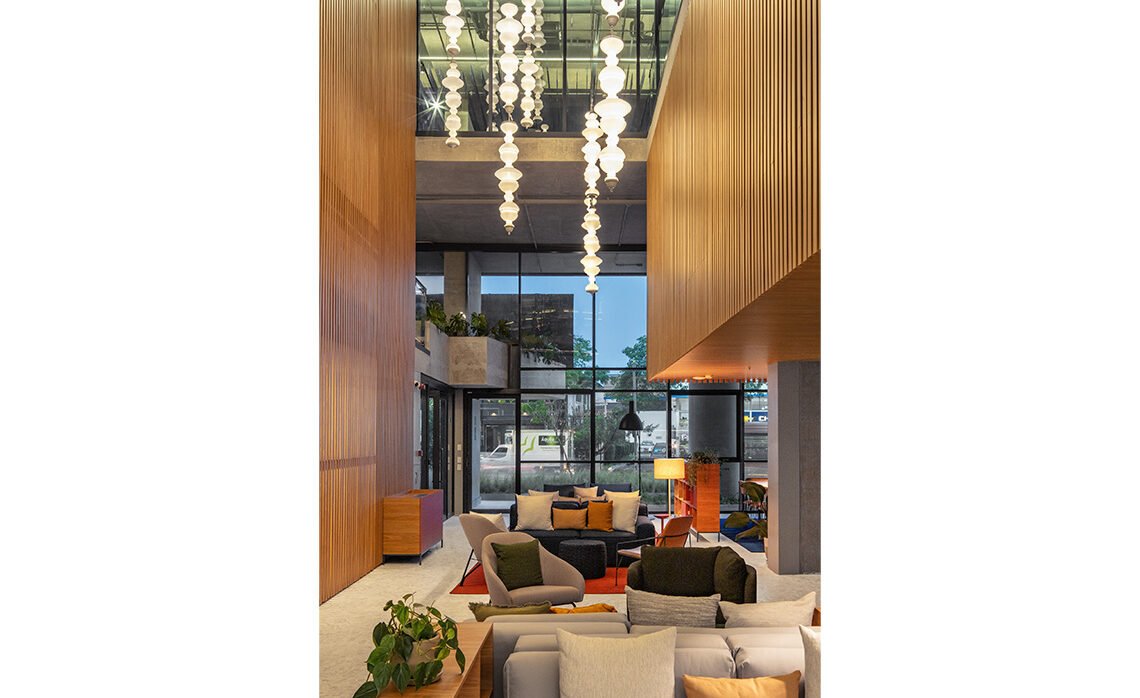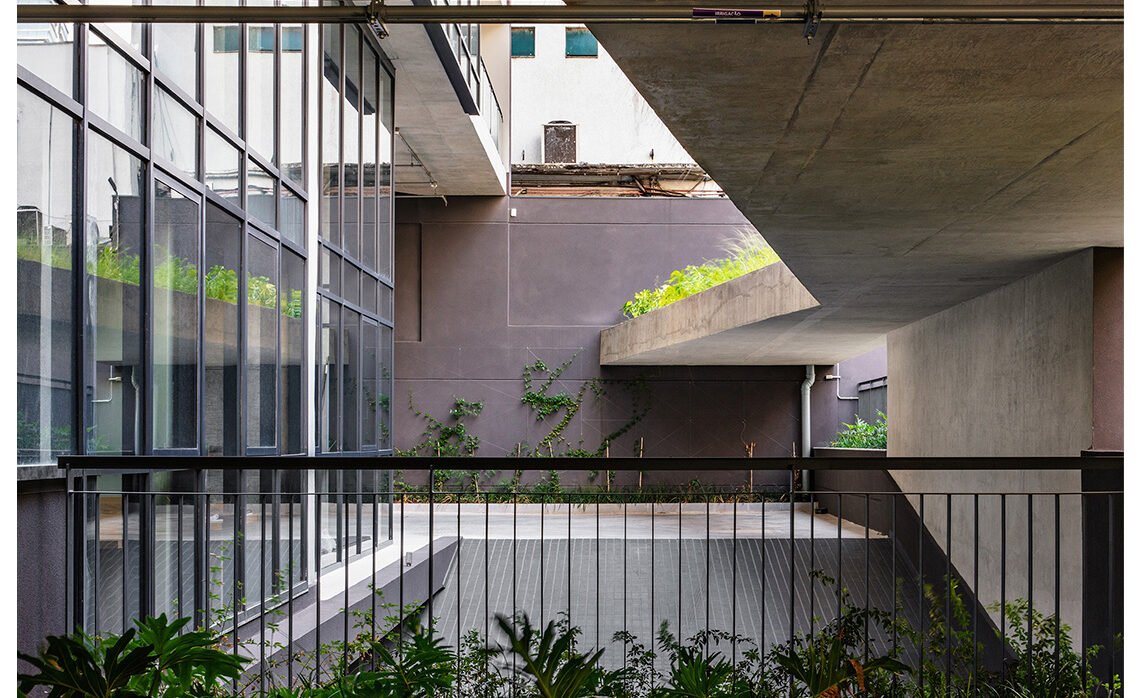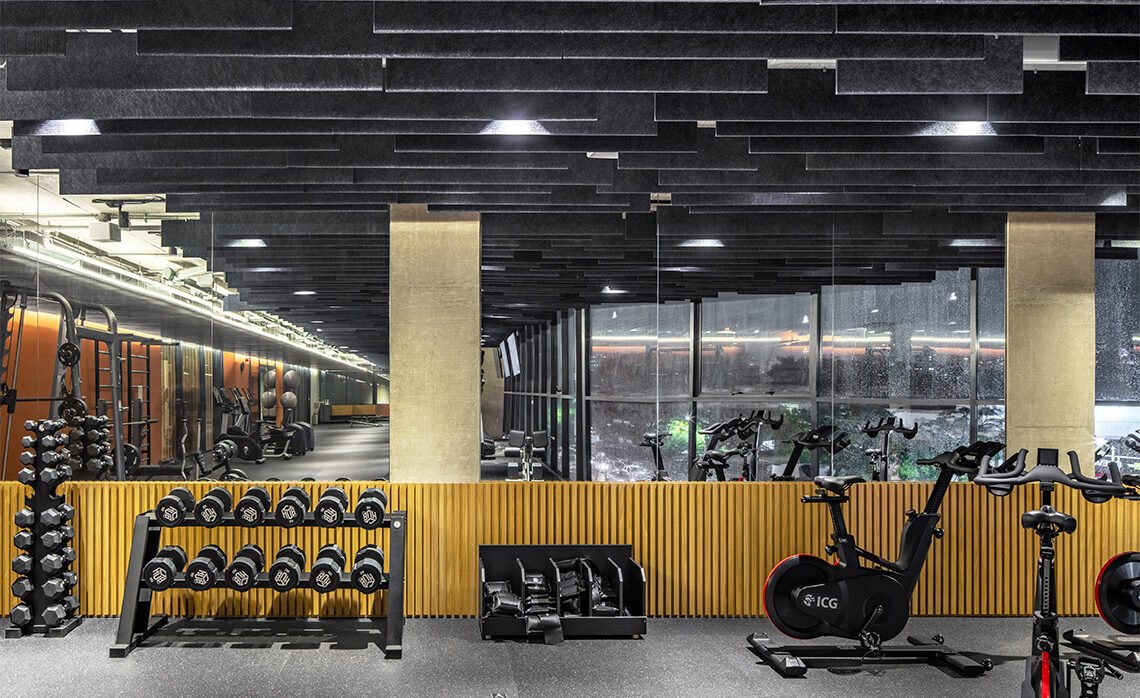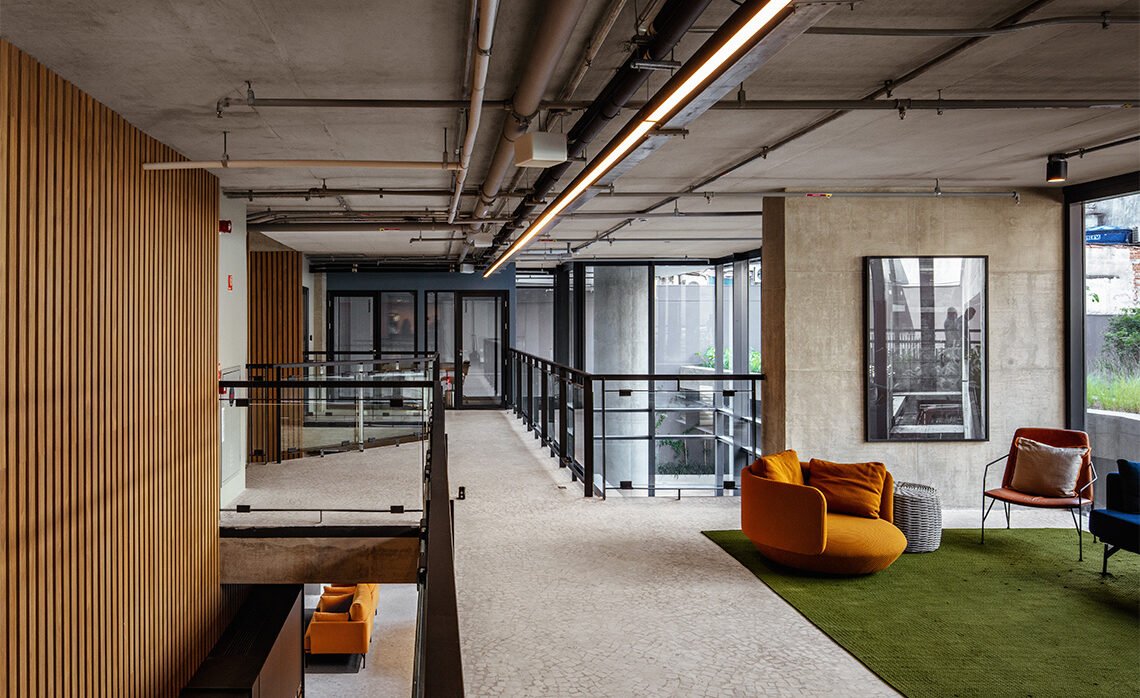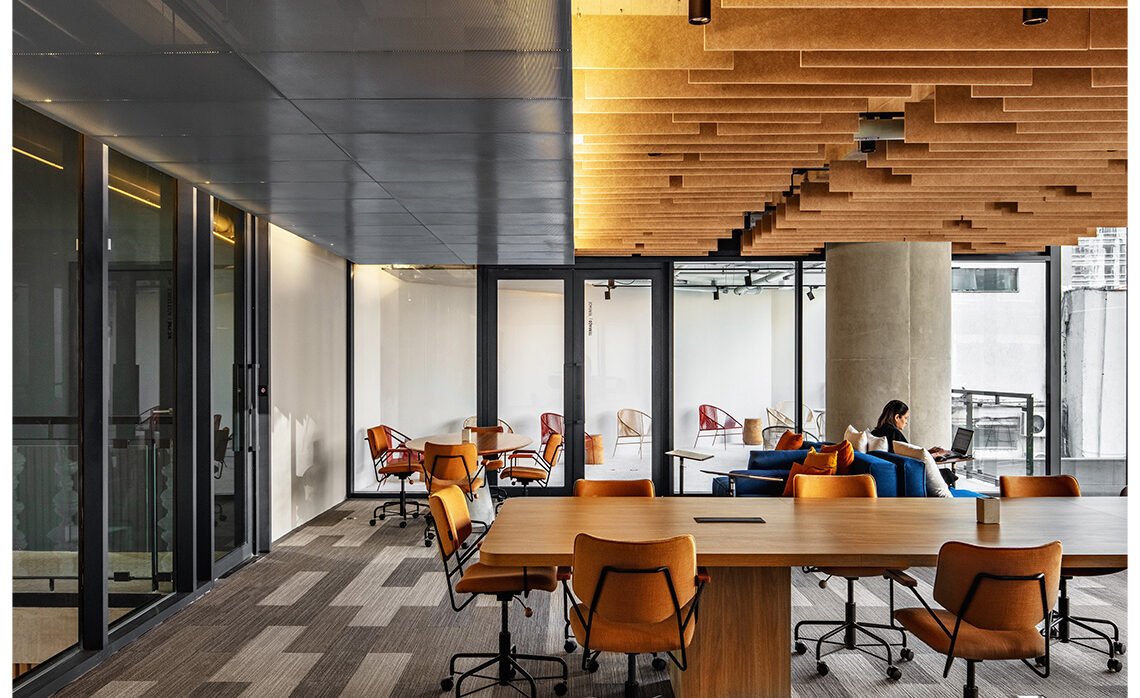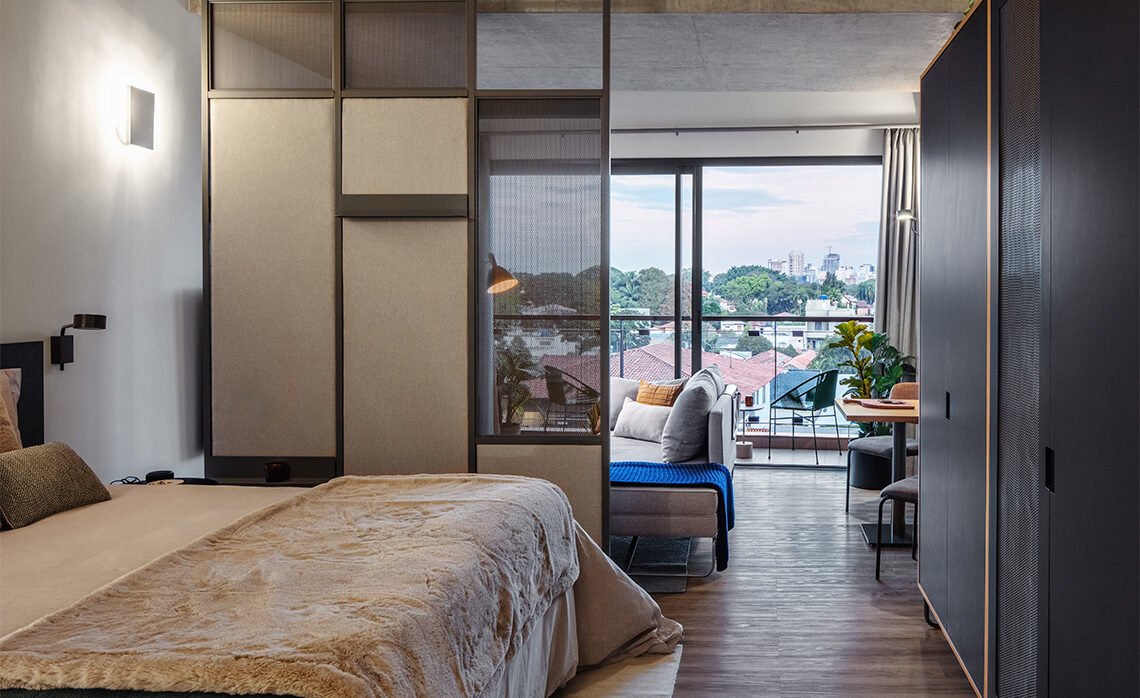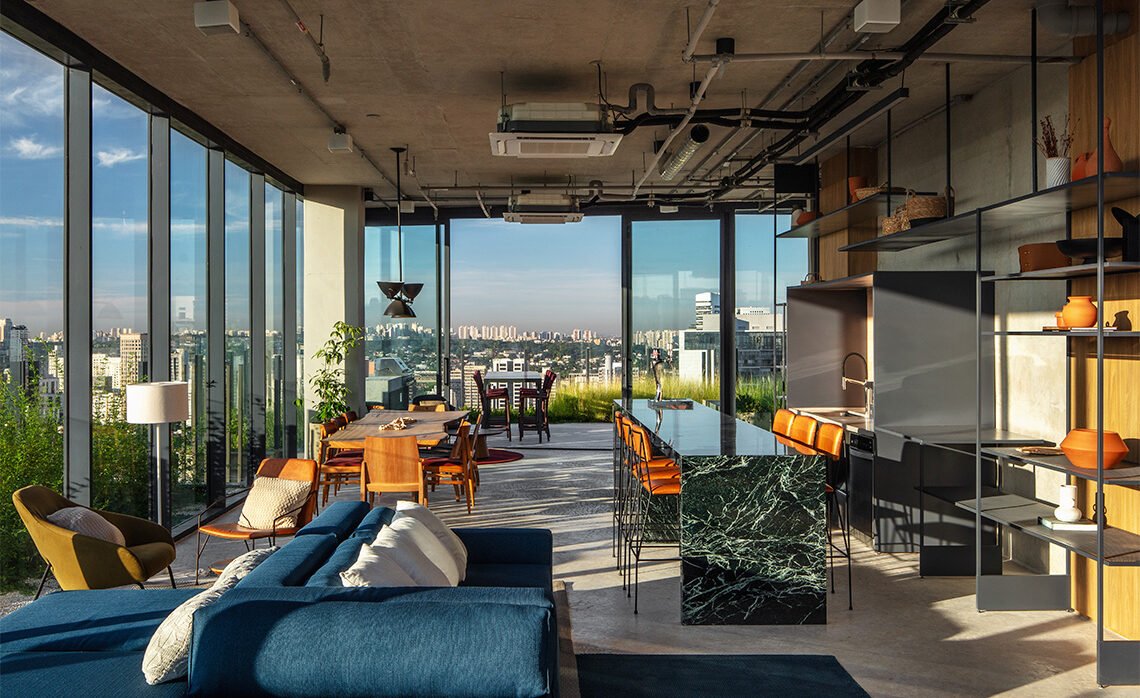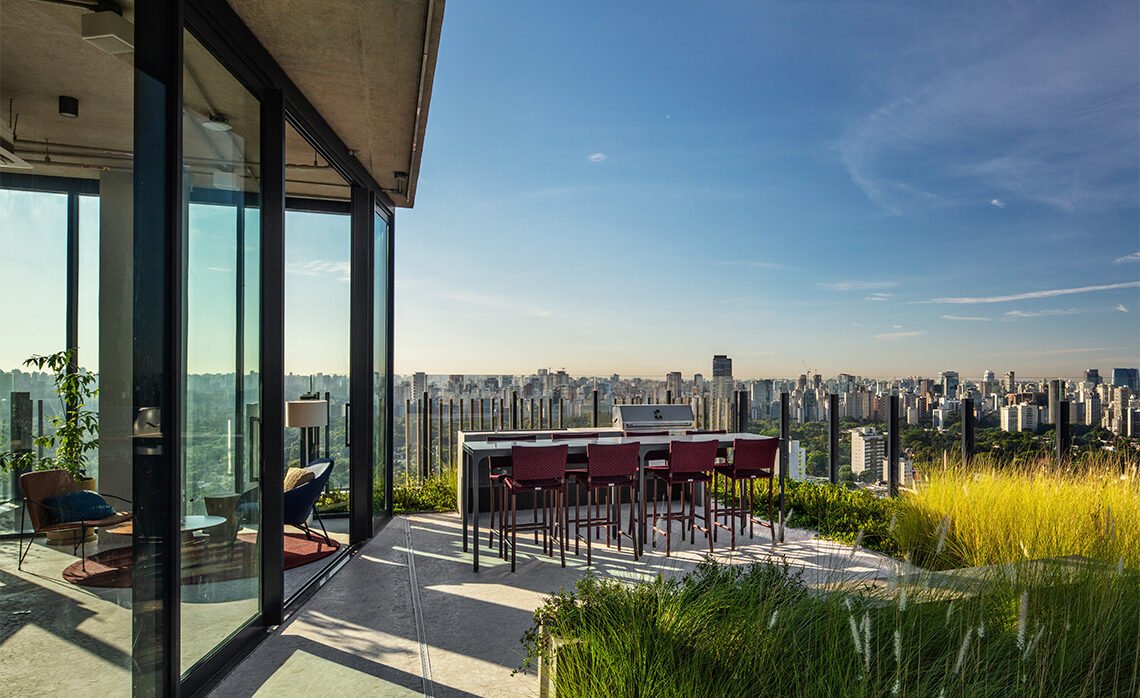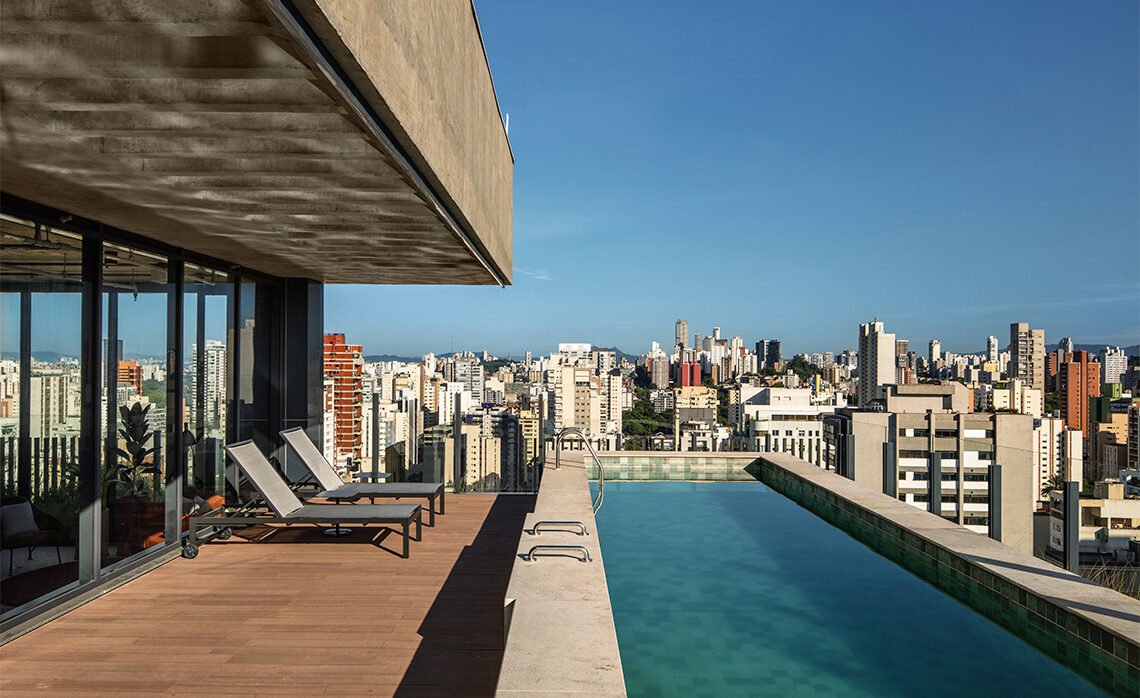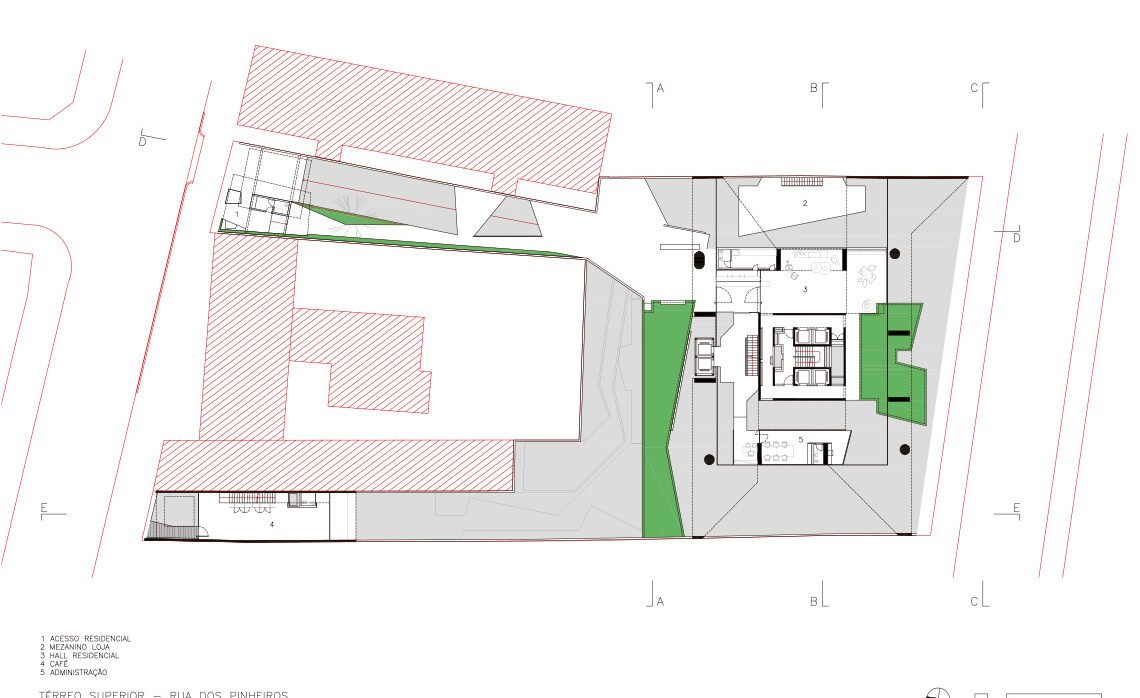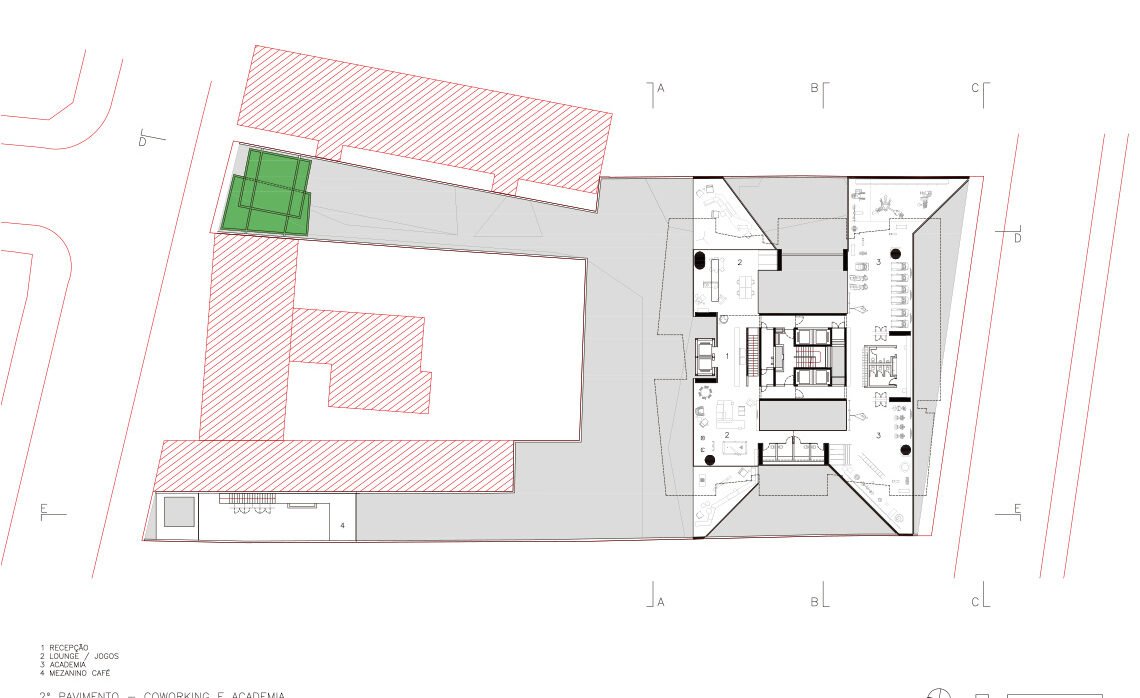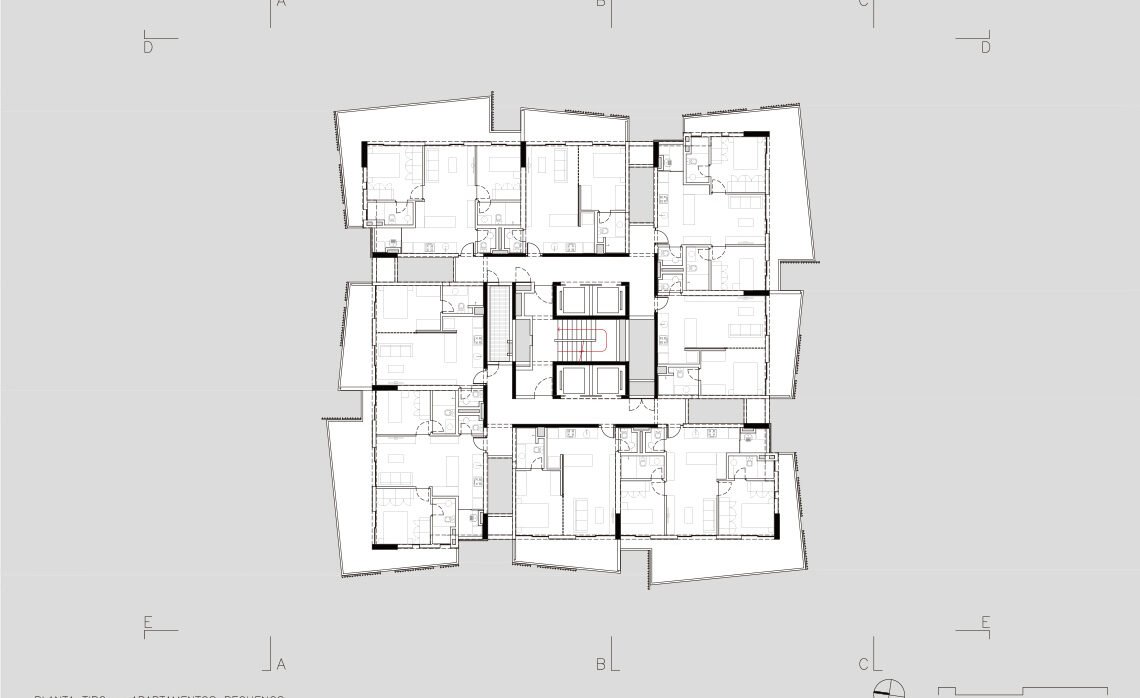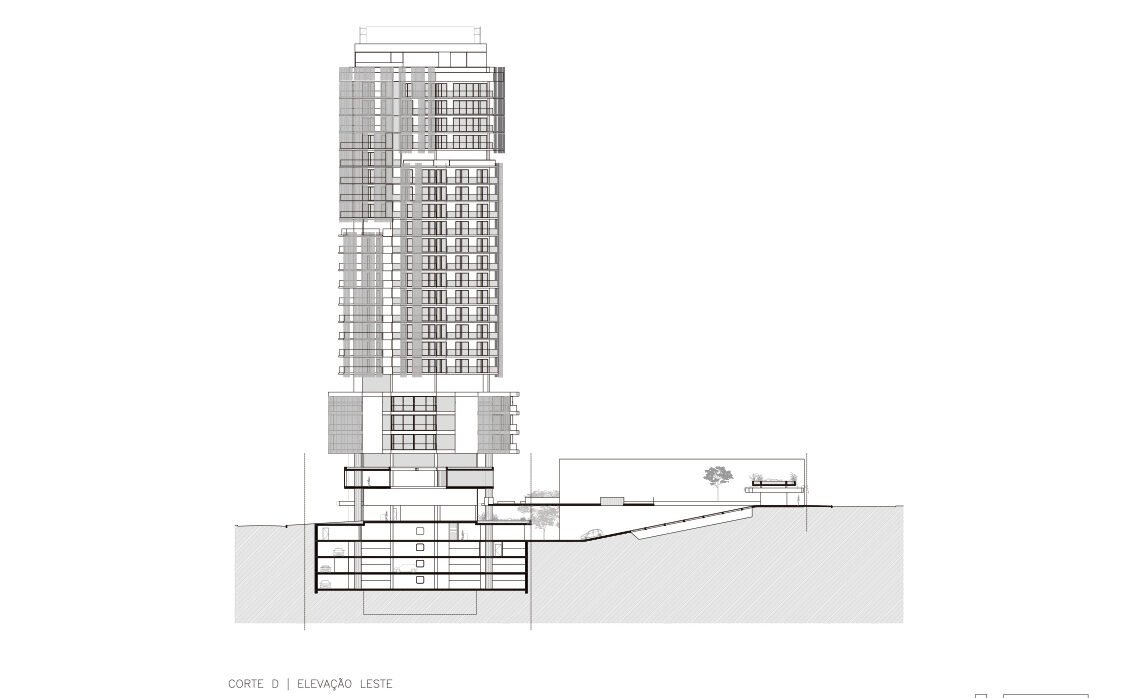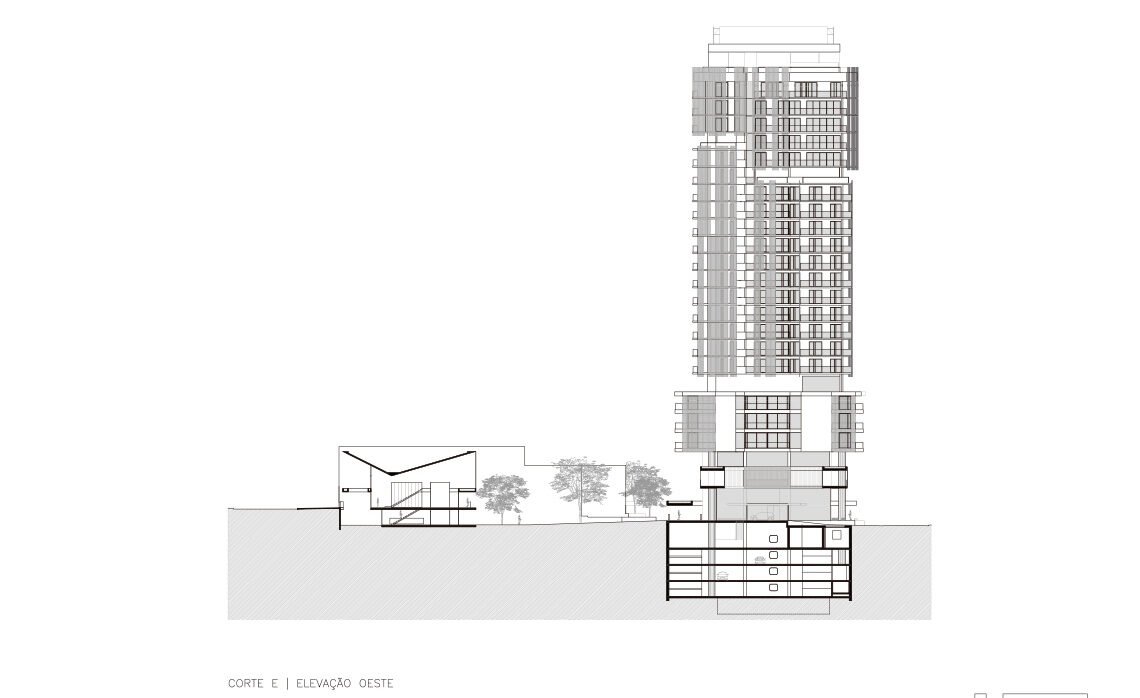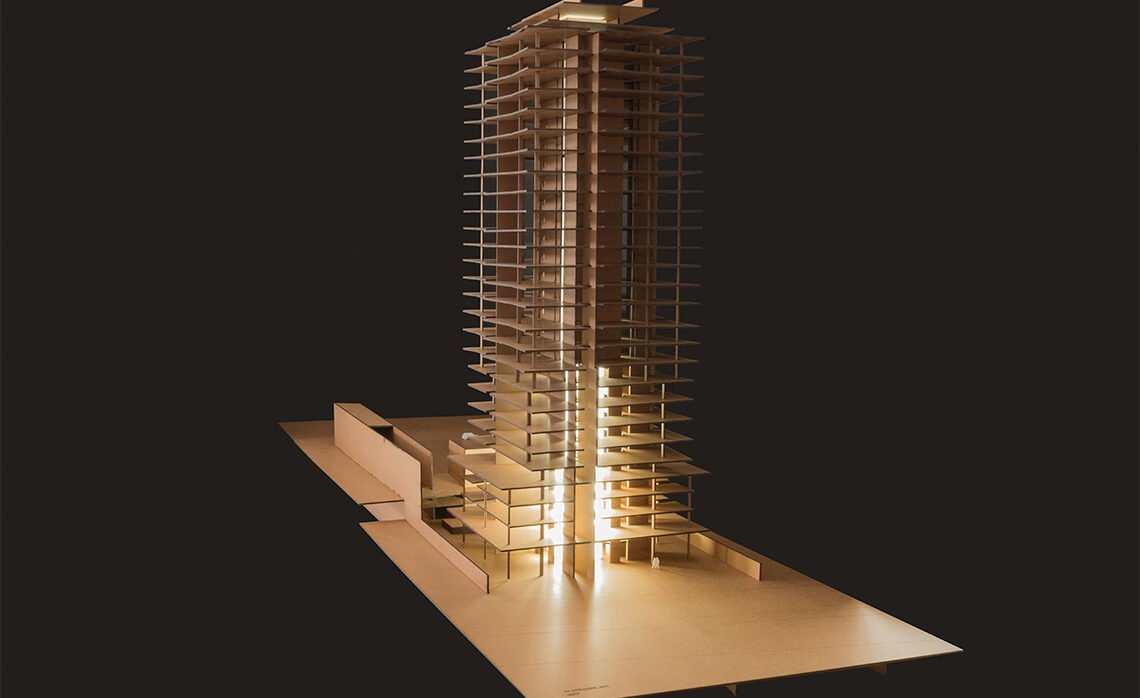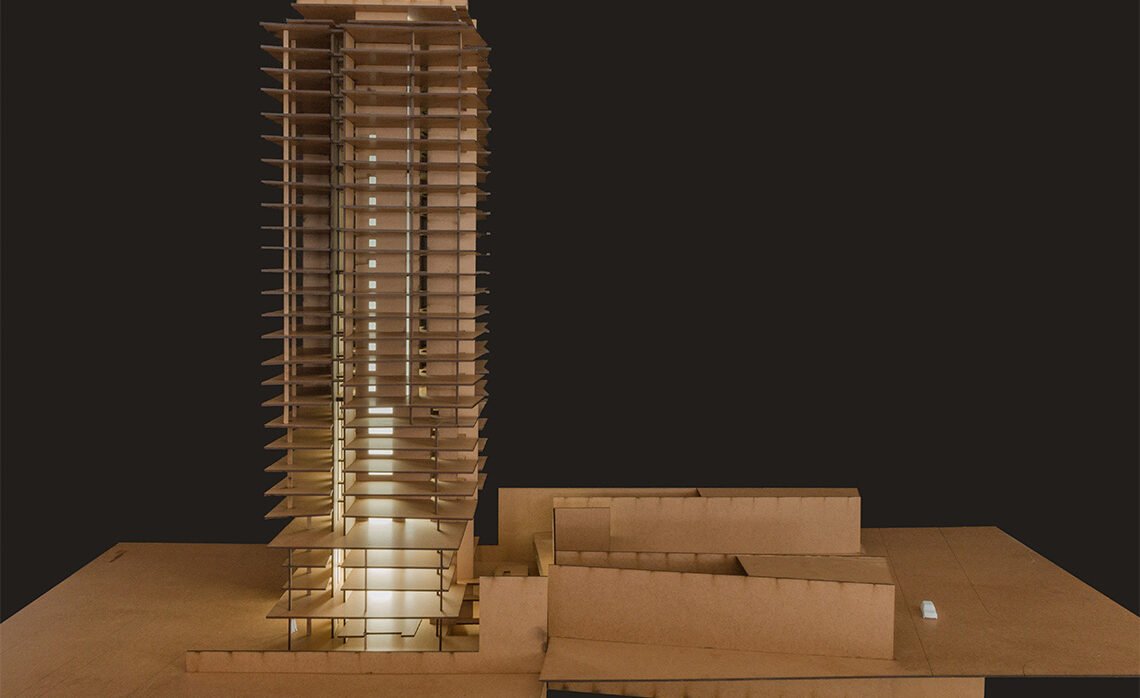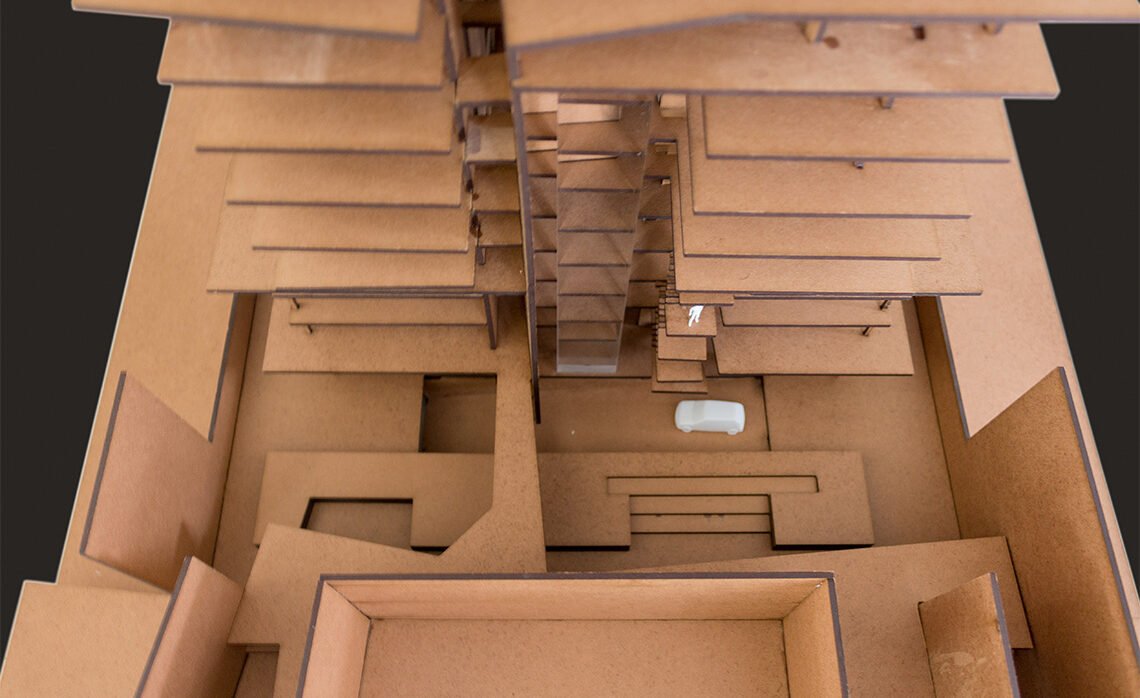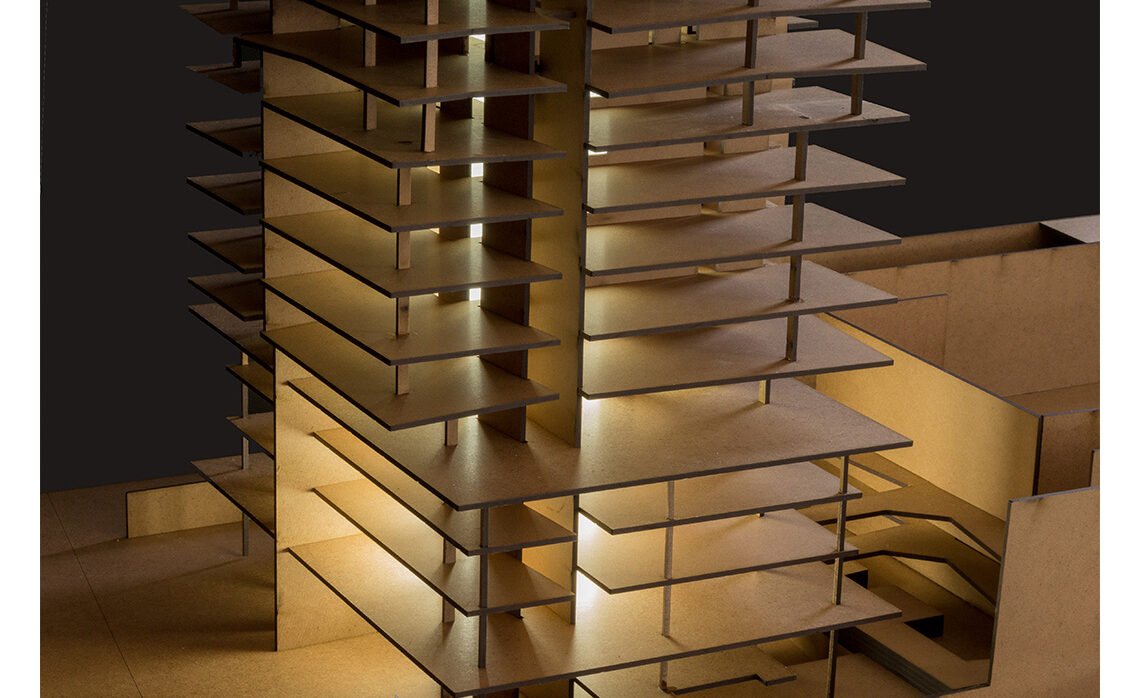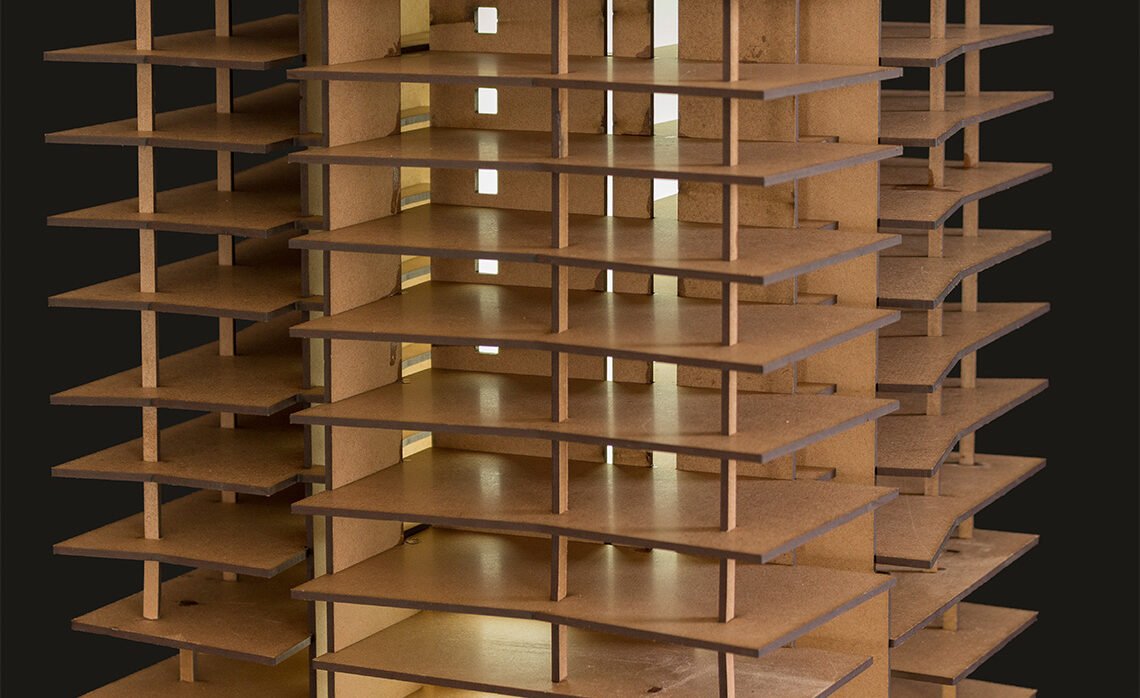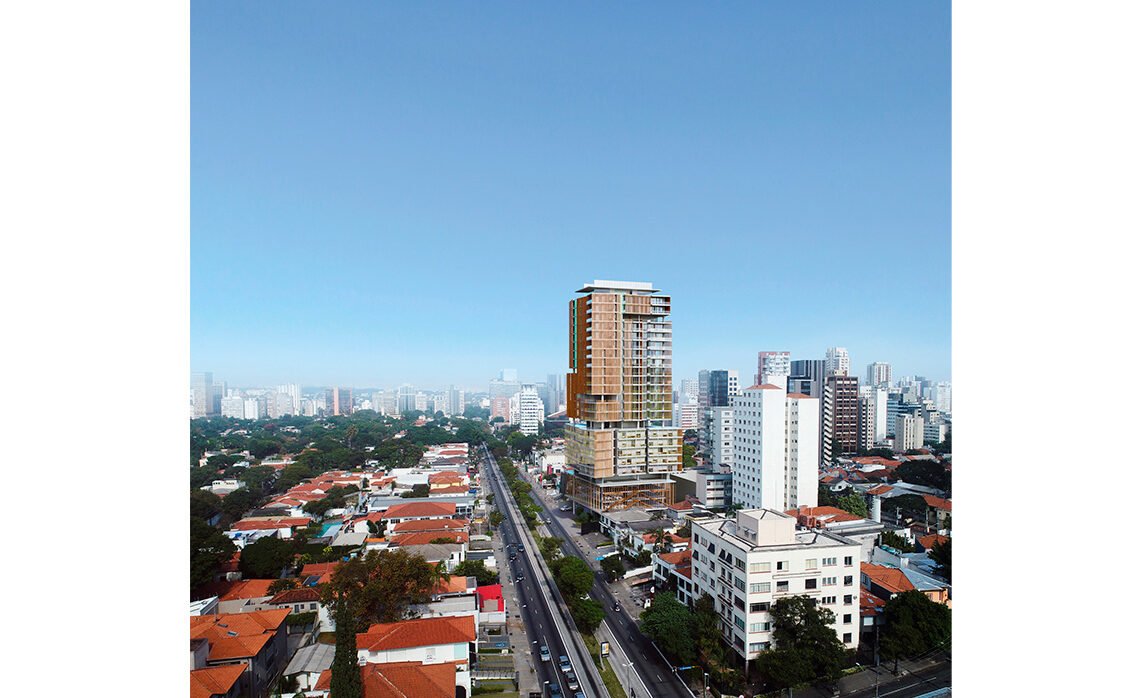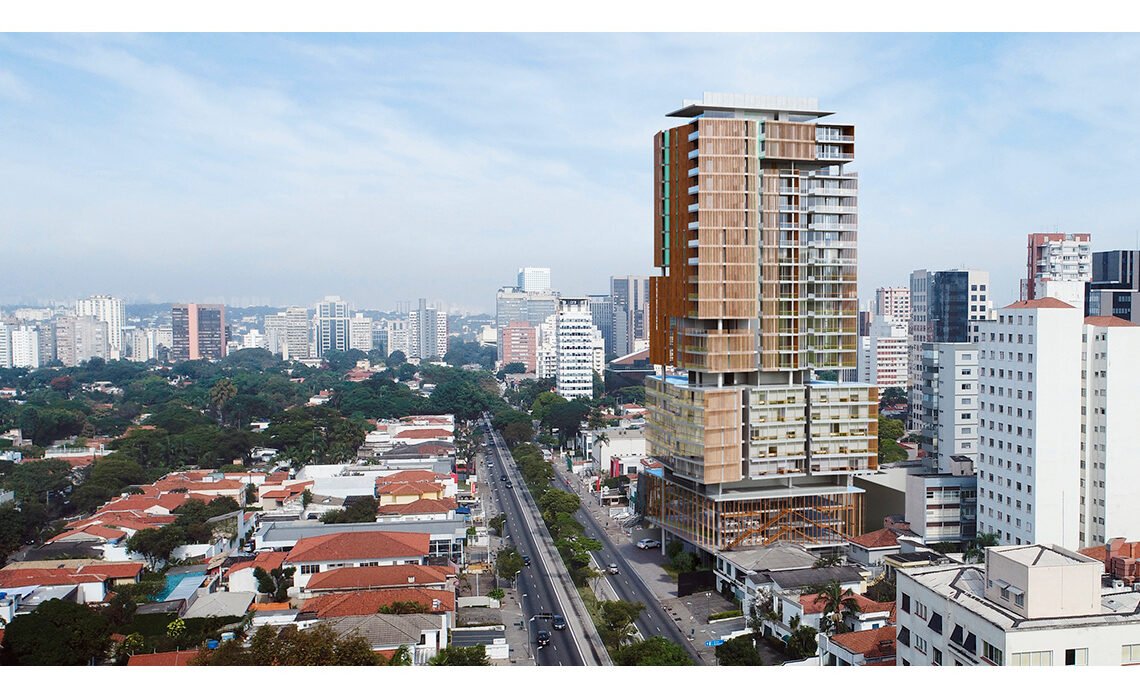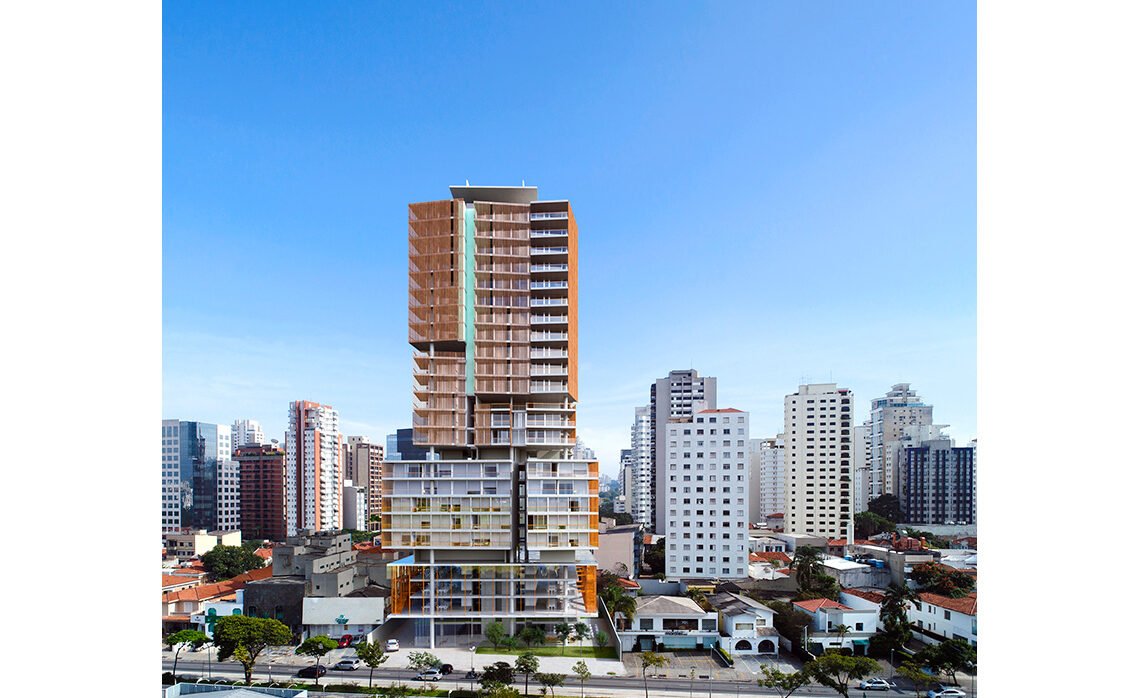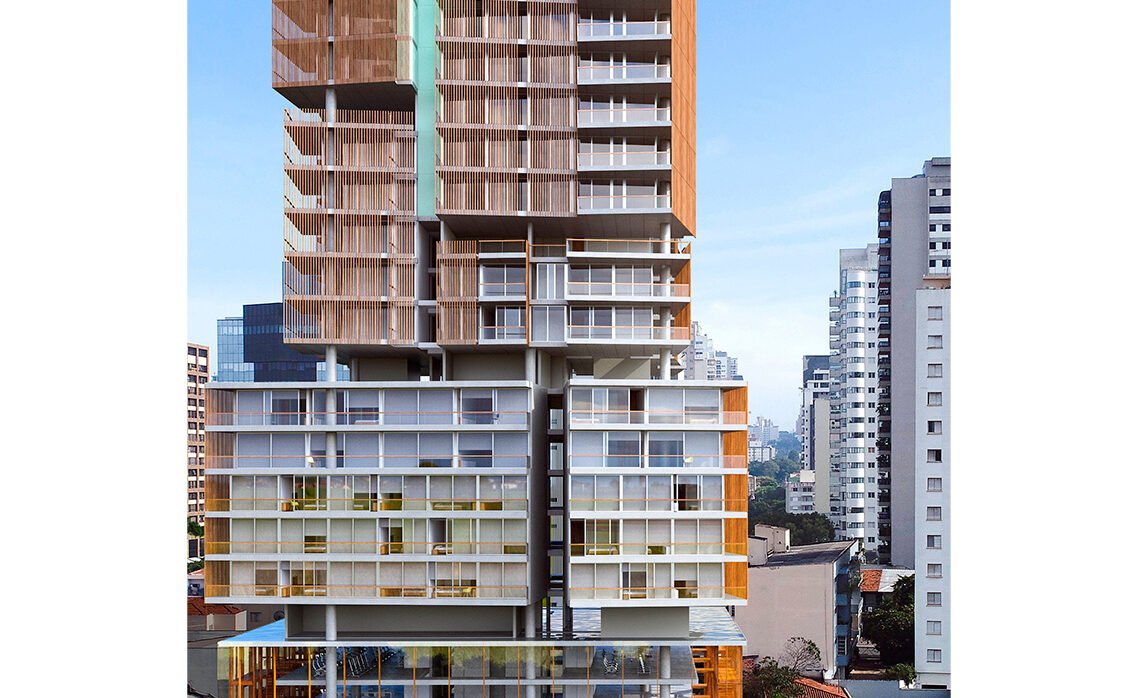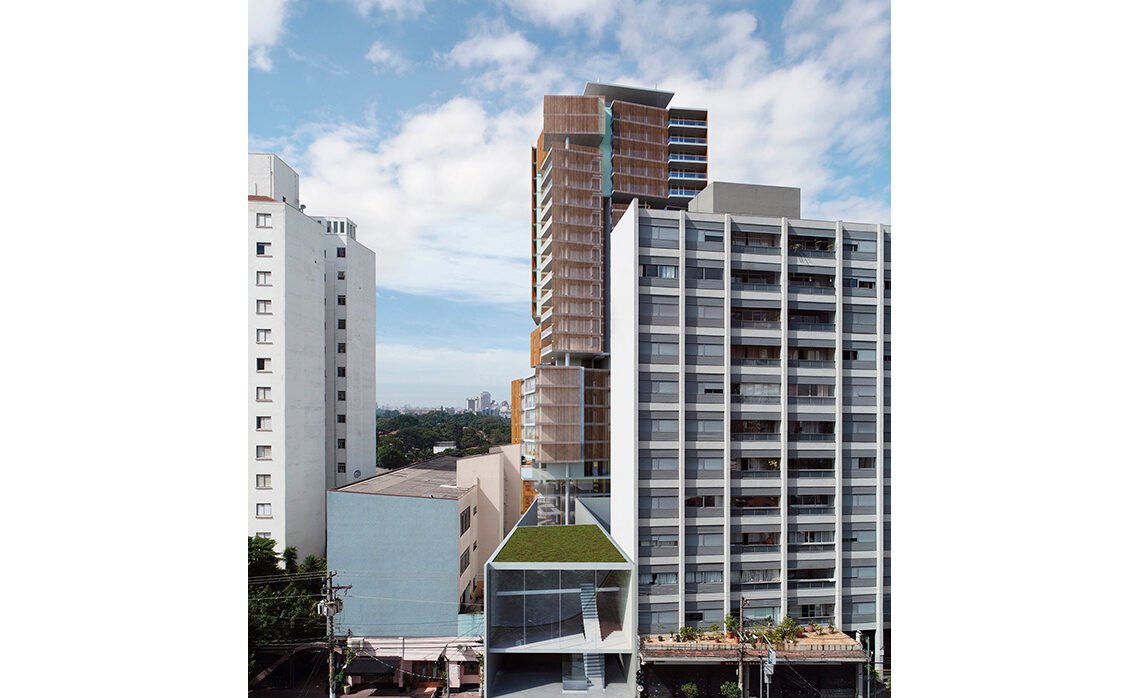Mixed-use building at Rebouças Avenue
Felipe Barradas
Lucas Roca
Martha Bucci
Tatiana Ozzetti
Victor Próspero
Gabriela Takase
Henrique Muniz
Luiza Zander Gaspar
Mateus Evangelista
Miguel Croce
Paula Dal Maso
Vitor Endo
Superlimão
LANDSCAPE DESIGN
Rodrigo Oliveira Paisagismo
LIGHTING DESIGN
lux projetos
ACOUSTICS
Harmonia Acústica
STRUCTURE ENGINEERING
Aluizio A. M. D’avila Engenharia de Projetos
FOUNDATION
SOLO.NET
ELECTRICAL ENGINEERING
FE Projetos Elétricos
HYDRAULIC ENGINEERING
REWALD Engenharia
INCORPORATION
SKR
DIGITAL MODEL
Ricardo Canton
PHOTOS
Nelson Kon
SITE AREA
2.635m²
TOTAL FLOOR AREA
21.320m²
A new normative context
The city of Sao Paulo, from 2012 to 2016 under the turn of Fernando Haddad as mayor, implemented a new normative aiming to improve the quality of urban space considering the possibilities and conditions of a rich metropolitan context. To incentivize mixed-use, commercial use, services and facilities are not computable as FAR up to 20% of the built area. In addition, in order to imprint a new spatial culture, to overcome the limit of the lot and to promote a richer offer of activities, some concepts were added to the new master plan: [1] active façade, to encourage commercial use and facilities on the ground level with open access to the public; [2] public fruition, to develop areas for public use; [3] broader sidewalks, with 5m as minimum width; [4] increased FAR, to improve the use of the existing urban infrastructure; [5] dwelling share, which establishes a ration of dwelling units according to the land area.
These legal triggers were related to areas of influence according to its distance of subway stations or bus corridors. Rebouças Avenue is a bus corridor axis and Pinheiros street hosts a subway station. Therefore, the site of this project is twice considered inside an area of influence.
This new normative context will start to imprint its results, a new feature to the city of Sao Paulo, in the next years.
The site
The neighborhood of Pinheiros is placed at the west side of Sao Paulo downtown. Limited on the east by Dr Arnaldo Avenue [the watershed between the two main river’s basins], on the west by Pinheiros river and having as its south bounder the Rebouças Avenue. Pinheiros is a traditional neighborhood with a hectic life and rich mix of activities. It faces, on the other side of Rebouças the ‘Garden City’ neighborhood, an extensively green area and protected zone. For that reason, the new legal triggers will just work on the west side of the that Avenue, assuring for those building at the Rebouças Av frontline a permanent panoramic view over green neighborhood up to the Ibirapuera Park. As a traffic corridor, the previous master plan, that elected car transportation as maximum priority, has limited for about thirty years the use and frozen the existing buildings in both sides along the avenue. The buildings have decayed and their program has lost public meaning.
The lot has a wide front [40m] facing Rebouças and two more narrow accesses [respectively 10m and 5m] from the parallel street called Pinheiros. It is not a regular shape of lot, but these three fronts increase the possibility to explore the relationship of the new project with the city and to build its public meaning through a proper way to propose its program and design. In addition, there is a difference of level between Pinheiros street and Rebouças Avenue, 3m, which allows to explore the possibility of a double ground level.
SKR as a client
For over than thirty years SKR has been directed by Silvio Kozuchowicz. As founder and CEO, he shaped his eye on the city from his professional position as a real estate developer, mostly after 2007, when the company was combined with Cyrela into a joint venture named SK Realty. Personally, however, he nourishes a passion for architecture, that can be easily measured through his remarkable repertoire and knowledge. Thus, he embodied in his own personality some of those conflictive issues that characterize the relationship between both: the rules that guide the design process and those guiding the real estate market decisions. The possible meeting point between both, in any social and economic context, is a fragile and controversial construction that could be defined by rules to regulate how we can live together levels of civilization.
Design process
The design process has started in June of 2016. More, or before, to design a building [as to plan a construction], we started by debating among a large group of interlocutors to understand the possibilities of this new normative context, and to conceive possibilities for that program aiming to mix uses and explore the possibilities of such lot and its metropolitan conditions. Our expertize designing buildings was slightly shifted as one step back in order to produce diagrams and schemes, sometimes physical models and 3D models, that could provide a support for assumptions and emulate a possible architecture. Thus, it was just after six months of hard working that we could be able to agree about a first possibility, an architectural proposition. From that point, four months more and it seems that we could develop that first agreement into a more elaborated possibility.
We are precisely at this point now. Meaning we have a clear architectural proposition of a mixed-use 20,000 sqm building that combines multiple dwelling typologies and different sizes of apartments, a hotel, spaces to work, gym, retail spaces, cafés, restaurant as urban facilities directly connected to the city including subway station on Pinheiros Street and bus corridor on Rebouças Avenue.
At this point, we made what was due at this step back position: to shape a new scenario made possible by those new normative context; we balanced expectations and possibilities among all and we built a meeting point through an architectural proposition that allows all interlocutors engaged in the process to feel themselves recognizable in that model.
Ahead of us, one step forward, we are going to be back to the field of our expertize: we have to develop the construction drawings with a team of engineers and collaborators of a building that must deserve to be inserted in the city.


